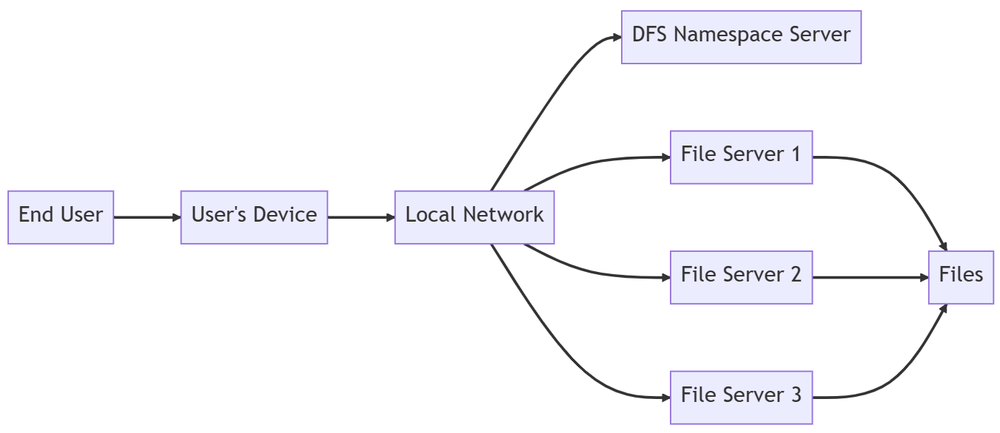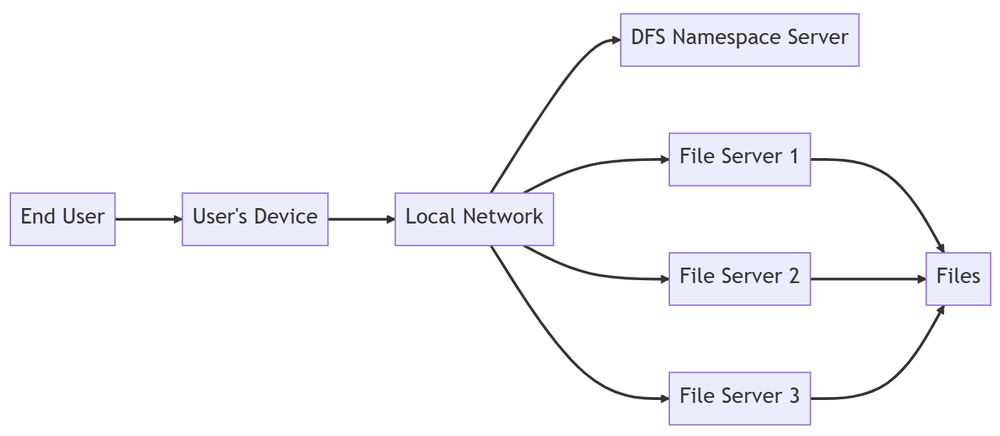While Windows Group Policy Folder Redirection can be a powerful tool for managing files and user data, it’s not always the best solution for every organisation.
For businesses seeking alternative file management strategies, there are several options available that can provide similar benefits without the downsides of folder redirection.
In this blog post, we’ll explore five alternative methods for managing files that cater to small, medium, and large business.
1. Cloud Storage Solutions
- Description: Cloud storage providers, such as Dropbox, Google Drive, and Microsoft OneDrive, offer robust file management and collaboration tools that can be utilized by businesses of all sizes.
- Benefits: Cloud storage solutions enable easy access to files from any location, automatic backups, and strong collaboration features. They often provide better scalability and can reduce the load on local servers.
- Considerations: Relying on a cloud storage provider may raise concerns about data privacy and security. Additionally, organizations with strict data residency requirements may need to consider alternative solutions.
2. Network Attached Storage (NAS)
- Description: A NAS device is a dedicated storage system that connects directly to a network, allowing users to access and share files easily.
- Benefits: NAS devices can centralize file storage, offer easy backups, and provide a straightforward solution for small to medium-sized businesses. They often come with built-in redundancy features to protect against data loss.
- Considerations: NAS devices can be more expensive than other solutions and may require additional hardware and software investment. They also may not be as scalable as cloud storage or enterprise-level solutions.
3. Distributed File System (DFS)
- Description: DFS is a file management solution that allows administrators to create a single, unified namespace for file shares across multiple servers. This provides a seamless experience for users who can access files as if they were on a single server.
- Benefits: DFS simplifies file management, improves redundancy and fault tolerance, and can be easily scaled to accommodate growing storage needs.
- Considerations: DFS requires a Windows Server environment and can be more complex to set up and manage than other solutions. It also relies on network connectivity, similar to folder redirection.
4. Virtual Desktop Infrastructure (VDI)
- Description: VDI involves hosting user desktop environments on a central server, allowing users to access their files and applications through a virtual desktop interface.
- Benefits: VDI centralizes file management and can help reduce hardware costs by consolidating resources on a single server. It also provides a consistent user experience across multiple devices and locations.
- Considerations: VDI can be expensive to set up and maintain, and it may not be suitable for organizations with limited IT resources or that require high-performance applications.
5. Enterprise Content Management (ECM) Systems
- Description: ECM systems provide a comprehensive solution for managing, organizing, and storing an organization’s documents and files. These systems often include advanced features like version control, collaboration tools, and advanced search capabilities.
- Benefits: ECM systems can help organizations streamline their file management processes, improve collaboration, and ensure compliance with document retention policies.
- Considerations: ECM systems can be expensive and may require a significant investment in hardware and software. They also typically involve a steep learning curve and may not be suitable for smaller businesses with limited IT resources.
Conclusion
There are numerous alternatives to Windows Group Policy Folder Redirection for managing files in small to large businesses.
Solutions like cloud storage, NAS devices, DFS, VDI, and ECM systems each offer unique advantages and considerations.
When selecting the right file management strategy for your organization, it’s crucial





